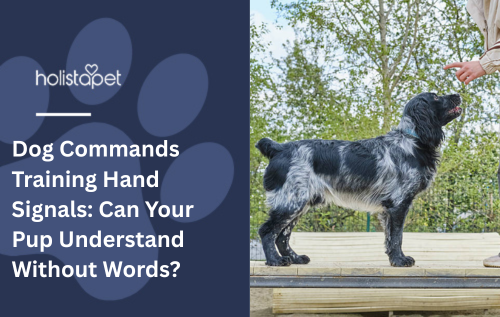Training your dog goes beyond spoken words. In fact, dogs often respond even better to visual cues than to verbal commands. That’s where dog commands training hand signals come in. Whether you’re teaching a puppy or refining an older dog’s obedience, hand signals can build better communication, stronger trust, and a more reliable bond with your furry friend.
 Why Use Hand Signals for Dog Training?
Why Use Hand Signals for Dog Training?
Dogs are highly observant and rely heavily on body language. Using hand signals allows you to:
-
Communicate clearly in noisy environments.
-
Strengthen focus and reduce confusion.
-
Train deaf or hearing-impaired dogs.
-
Reinforce obedience and discipline through consistency.
Common Dog Commands with Hand Signals
Here are some of the most popular commands you can start with:
-
Sit – Raise your hand with palm upward, then move it slightly upward.
-
Stay – Extend your hand forward, palm facing the dog, as if signaling “stop.”
-
Come – Sweep your hand toward your chest, encouraging your dog to move closer.
-
Down – Point your finger or palm downward toward the floor.
-
Heel – Pat your thigh or motion your hand close to your side.
Consistency is key—pair the verbal command with the hand signal until your dog masters the visual cue alone.
Helpful Notes for Dog Owners
-
Keep training sessions short (5–10 minutes) to avoid overwhelming your dog.
-
Use positive reinforcement—treats, praise, or playtime work best.
-
Train in a quiet space before practicing in distracting environments.
-
Always stay patient—every dog learns at a different pace.
 Frequently Asked Questions
Frequently Asked Questions
1. Can dogs really understand hand signals better than words?
Yes! Dogs often pick up on visual cues faster than verbal ones because they naturally read body language.
2. How long does it take to train a dog with hand signals?
On average, it can take a few weeks of consistent practice for a dog to fully recognize and obey hand signals.
3. Can I train my dog with hand signals only, without voice commands?
Absolutely. Many trainers start with both and gradually transition to just hand signals if desired.
4. Do hand signals work for older dogs?
Yes. Older dogs may take a bit longer to adapt, but they can still learn effectively.
5. Are hand signals useful for deaf dogs?
Definitely. Hand signals are one of the best communication methods for dogs with hearing impairments.
Final Thoughts
Training your dog with commands and hand signals is an effective way to improve communication, obedience, and trust. Whether your dog is young, old, hearing-impaired, or simply eager to learn, hand signals give you a reliable training method that strengthens your bond.
With consistency, patience, and positive reinforcement, your dog will not only obey commands but also become more attentive to you as their leader.


 CBD Oil for Dogs - Fast Acting
CBD Oil for Dogs - Fast Acting
 Chicken Flavored CBD Oil For Dogs - Easy Dose
Chicken Flavored CBD Oil For Dogs - Easy Dose
 Salmon Flavored CBD Oil For Dogs - Highly Rated
Salmon Flavored CBD Oil For Dogs - Highly Rated
 CBG Oil for Dogs and Cats - Loved by Thousands
CBG Oil for Dogs and Cats - Loved by Thousands





Leave a comment
All comments are moderated before being published.
This site is protected by hCaptcha and the hCaptcha Privacy Policy and Terms of Service apply.